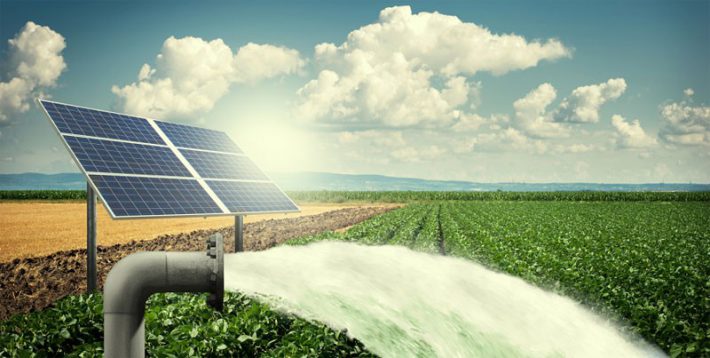India is a country with 26 million groundwater pumps, which incur a combined cost of $6 billion to the farmer, annually. Sources of water for irrigation have remained dominant, for our country in which more than 50% of the population is dependent on agriculture for a living. Agriculture contributes to 15% of India’s total GDP. But only 44% of the land is brought under irrigation.
India, being a tropical country, receives an abundance of strong sunlight – paving the way for massive potential in solar energy. Most mainland areas in India get almost 300 days when the sun shines brightly enough to produce up to 5000 kWh solar energy per year. So, maximum land can be brought under irrigation by using solar pumps.
Solar pumps run on the electricity generated by photovoltaic panels or the radiated thermal energy which is collected from sunlight. Solar pumps are useful where grid power is unavailable, or of poor quality and unreliable. The solar pumping systems are widely used for agriculture and livestock, rural /tribal area water supply, forest, and host of other areas where electrification is a challenge.
Some of the benefits of solar pumps are mentioned below:-
- Solutions to Drinking Water:- Solar Pumps are solving the problems of Indians who are facing the shortage of clean water. Most of the available freshwater is found in the underground. Drinking water supply can be met in water scarce areas, areas which face erratic power supply, areas which don’t have access to clean water, and areas which are frequently hit by calamities like drought. Solar pumps can ease access to clean underground drinking water, thus, cutting down the usage of conventional or polluting energy, and contributing towards a healthier nation.
- Drip Irrigation:- Drip irrigation is an effective mechanism to deliver water directly to the roots and allows the introduction of such crops which would not have survived with a dependence on rainfall or erratic grid power. Solar powered pumps save hours of human labour and are immune to fuel shortage.
- Fogging:- A Fogger is Machine that pressurizes the flow of water and generates water droplets to maintain humidity and a lower temperature in cow sheds, especially in the hot and dry summers of Northern India. These foggers can receive their water supply from solar pumps at a very low maintenance cost. If diesel were used to power these pumps then its emissions could have a dangerous effect on livestock. Solar powered foggers are safe to use with no carbon emission.
- Pisciculture:- In pisciculture, or fish farming, water is needed to be supplied from a height in order to supply the fish with much-needed oxygen. If these water sources were run by grid power then a sudden power cut could hurt the fish stock by affecting their habitation. This is the worst nightmare for someone who is into fisheries and pisciculture or even aquaculture, where one simply can’t afford to lose livestock to intense heat and fluctuating temperature. Recirculating the water in the system is much needed in aquaculture. In such cases, solar powered pumps provide a stable and predictable supply of water.
- Generating Electricity:- Solar pumps are not restricted to being just an irrigation asset. Although expensive, if a compatible battery inverter can be connected to solar panels, farmers can sell the extra electricity generated by the solar panels to their neighbours. Solar pumps can, thus, become risk-free income generating assets for farmers. This extra income can lead to a better lifestyle.
To know more about solar pumps, click here.

